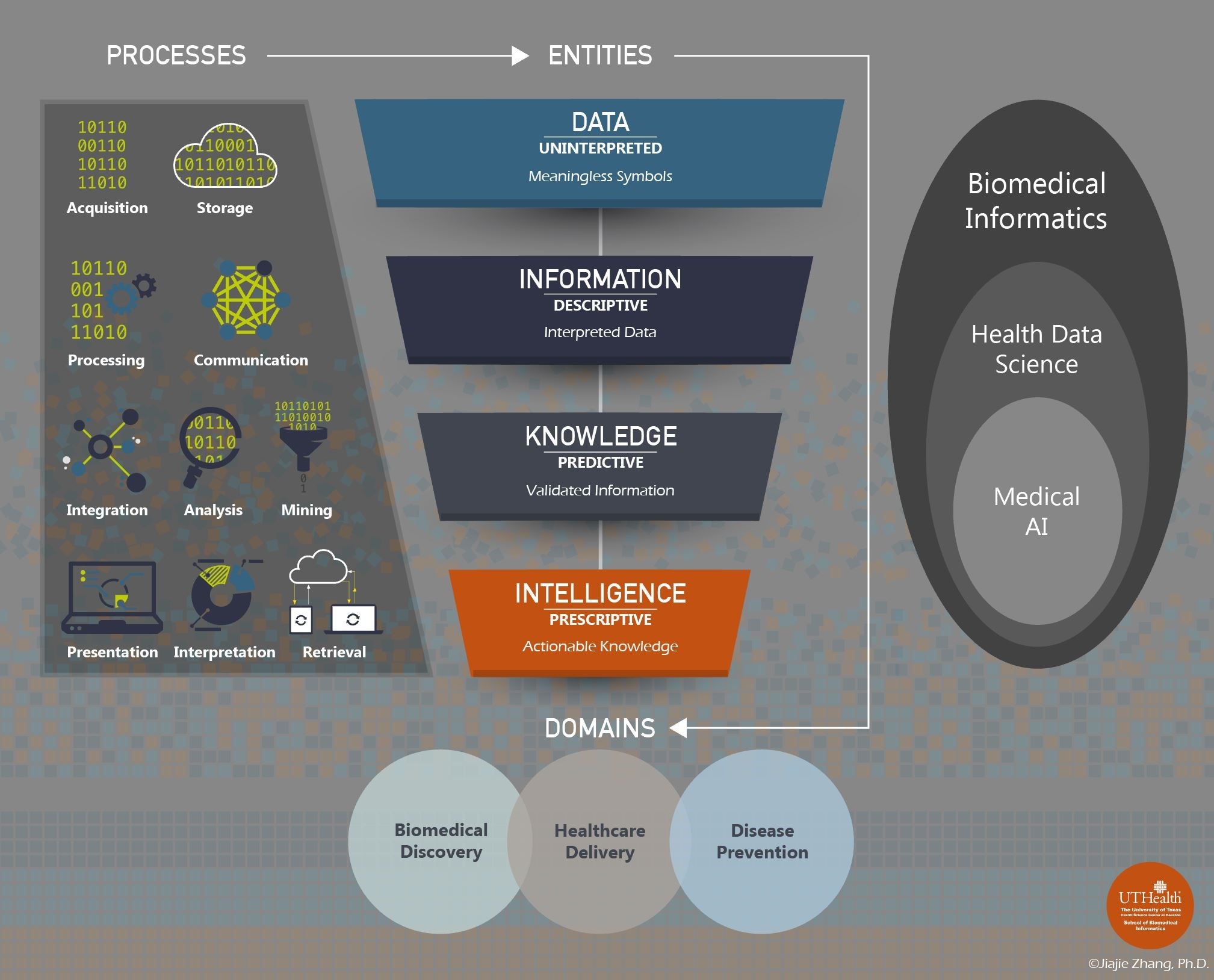Blog Articles
March 19th, 2019
When examining the connection between biomedical informatics, health data science, and medical AI, the relation is rather simple – both Medical AI and Health Data Science are sub-disciplines of Biomedical Informatics.


Dr. Zhang is Dean, Professor, and Glassell Family Foundation Distinguished Chair in Informatics Excellence at the School of Biomedical Informatics (SBMI) at the University of Texas Health Science Center at Houston (UTHealth).
Read BioBiomedical informatics includes an amalgam of health data science with both biomedicine and health components added in; it also includes the social, behavioral, management, policy, and other aspects in health data and technology. Health data science is a recent name that grew out of the emergence of big health data, although biomedical informatics has been around for several decades. Medical Artificial Intelligence (AI) was in fact the most important topic of biomedical informatics in the early days several decades ago. Medical AI is undergoing a renaissance recently, finally able to solve some of the hardest real-world problems thanks to the recent breakthroughs in machine learning, big data, and computing capacity. The field of biomedical informatics is in general an interdisciplinary field that involves:
Within biomedical informatics, there is an emphasis on certain key processes; acquisition, storage, communication, processing, integration, analysis, mining, retrieval, interpretation, and presentation. These processes transform data to information to knowledge to intelligence; these are entities. Once researchers have entities for evaluation, the next step is to perform descriptive, predictive, and prescriptive tasks or functions. In general health data science or informatics, these processes, entities, and functions can be applied to any domains. For biomedical informatics, the application domains are biomedical discovery, healthcare delivery, and disease prevention.
Let’s take a closer look at how this framework works: